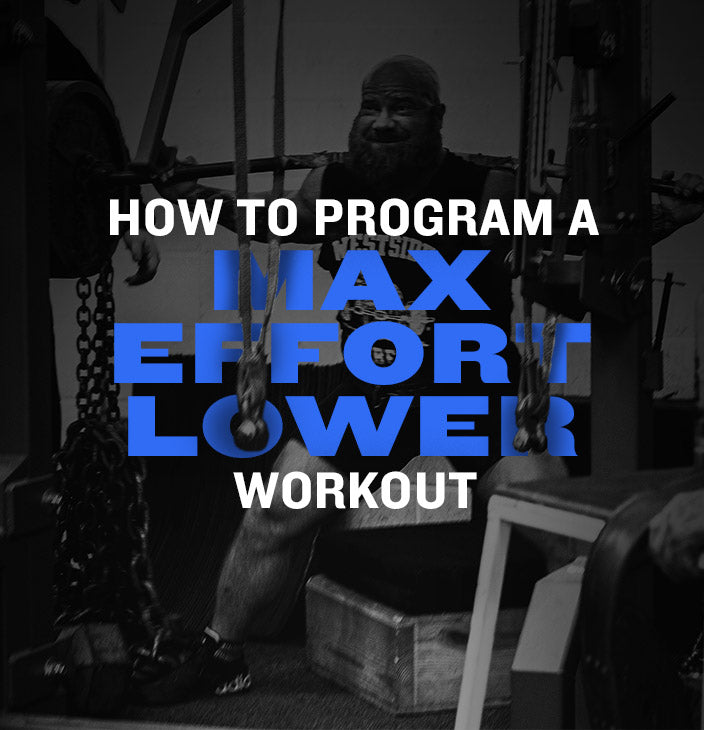WSBB Blog: Breakdown of a Max Effort Lower Workout

One of the training methods Westside Barbell is most known for is the maximal effort method. The maximal effort method uses high-intensity single rep exercises to raise an athlete’s absolute strength capacity. Louie has long stressed the importance of absolute strength not only for the powerlifter but also for the athlete.
Absolute strength is the king of all strengths. Without the presence of increasing levels of absolute strength, other strengths like speed strength, strength speed, and strength endurance will suffer. By regularly training at high-intensity levels, we are constantly raising our absolute strength levels, which leads to a higher potential for increases in all other strengths as long as the exercise programming is properly organized.
Below, we will go over each part of a max effort lower day, explaining the theory behind each part of the workout.
The Main Exercise
When it comes to max effort lower training, the main exercise will always be some form of a squat, deadlift, or a goodmorning. Ideally, these exercises will be appropriately patterned to appear regularly in your exercise rotation. If a lifter were to neglect one of these exercises, it would be a mistake; all three exercises are some of the most effective strength training exercises you can perform.
At Westside, our max effort workouts are almost always performed until a top set single above 90-95% is lifted. The only exception is when goodmornings are performed, which are typically performed for a top set triple. We recommend against single rep goodmorning max effort training for the average lifter due to the risk of injury. Single rep goodmornings should be performed by highly skilled athletes only.
Once we have executed our top set, we will either lower the bar weight and perform a few down sets or move on to accessory work. If we elect to do down sets, we will perform three to five extra sets of five to eight reps per set.
Accessory Exercises
To consistently increase strength and ability, athletes must immediately address weaknesses. This is where accessory exercises come into play. Your focus should be on selecting exercises that will significantly impact whatever lower body muscular weakness you have identified.
At Westside, we typically select three to five accessory exercises depending on the difficulty of the main exercise. How many exercises you choose to use during a particular training day should always be based on recovery level. If you feel good, with no aches and pains, we recommend four to five accessory exercises. Suppose recovery is lacking, and you feel like crap. In that case, you will want to choose fewer exercises, instead focusing on the quality of the exercises you perform and then getting home to begin recovering further.
GPP
Every max effort lower day will include some general physical preparation work. GPP should be performed at the end of your workout, with the amount of work put in kept to a moderate level. The goal here is two-fold; increase our GPP, which in turn impacts our strength training foundation, and get some cardiovascular endurance work in.
At Westside, we will typically perform GPP work using a sled variation, a wheelbarrow walk, or an ATP variation. The goal is to challenge yourself and raise your fitness level; you should not be forcing yourself to get extra sets in and risking injury. The idea behind GPP work is to help increase fitness levels and recovery rates, not to prove something.
Works Sourced:
Westside Barbell Book of Methods; by Louie Simmons
Special Strengths Development for All Sports; by Louie Simmons
Science and Practice of Strength Training; by Dr. Vladimir Zatsiorsky and Dr. William Kraemer




